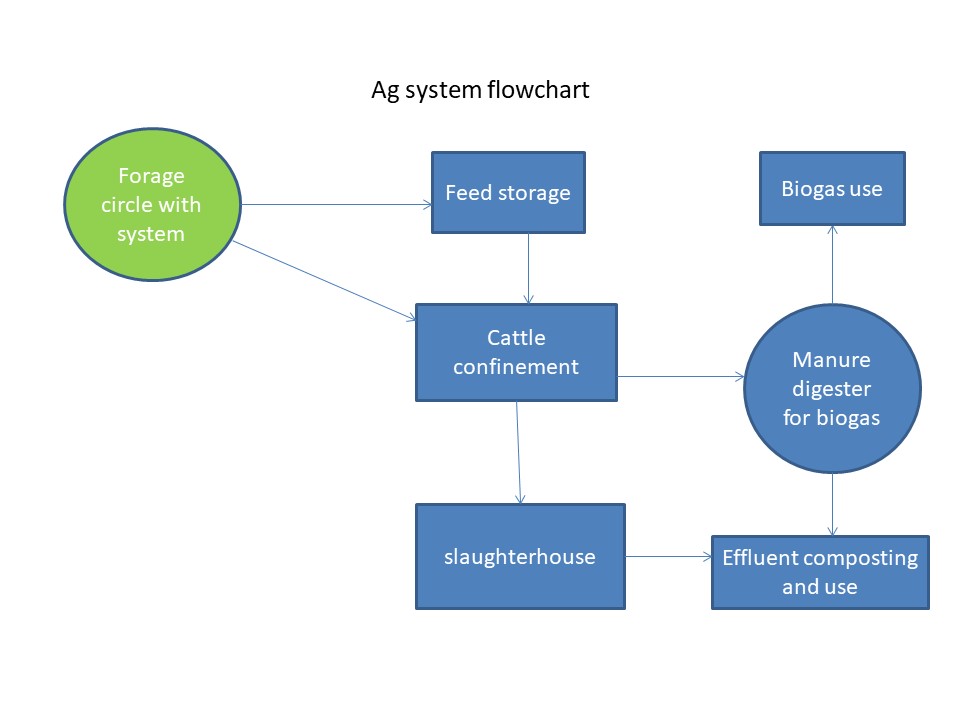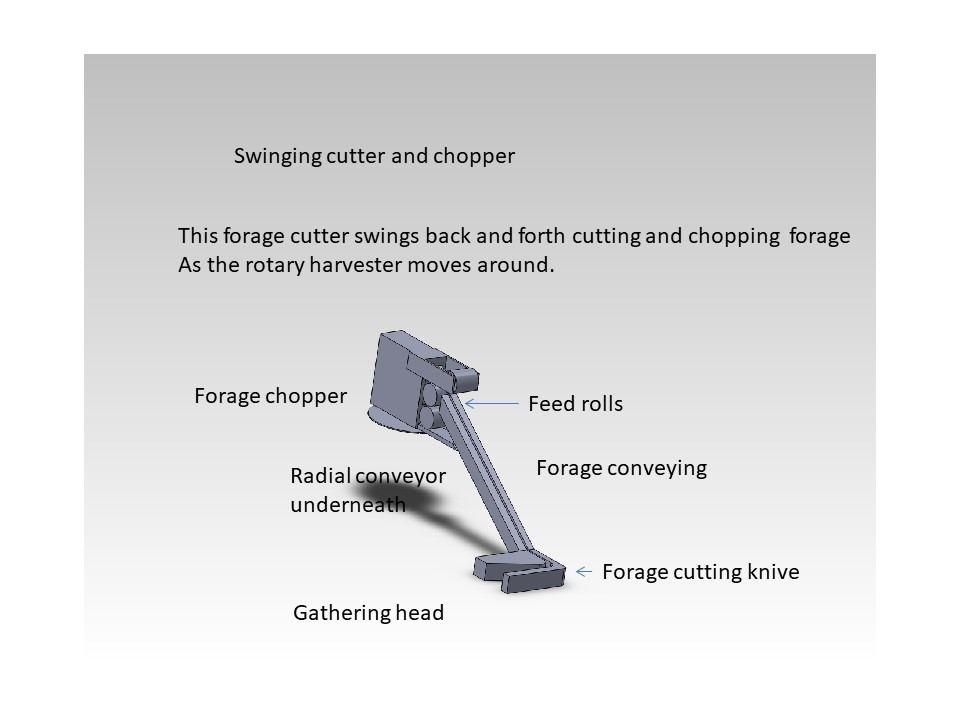The automatic forage harvesting system offers all weather 24/7 feed harvesting and watering with substantial advantages. The rotating system with widely spaced permanent wheel circular paths leaves the vast majority of the field untouched for optimal growing conditions. Keeping the cattle on concrete in fabric shelters provides an optimal place for short term feeding before slaughter as there is no difficulty gathering the cattle when they are ready to be walked to the slaughterhouse.


This system allows maximum –production from a forage crop ideally one like eastern gamma grass that is high quality but needs to be not cut or grazed short. With the overhead support frame holding up the cutter head the forage can be cut at any desired height for optimal growth and use. It is believed that cutting the forage at several feet of height will allow more rapid regrowth and better quality. At the end of the season after frost the forage can be cut low so that a winter forage crop can be planted or allowed to grow.
A sickle type cutterhead is shown but the system can use a variety of harvesting heads and can also be equipped with planters etc. to do operations. There is tremendous benefit in not having wheel or animal traffic on muddy type soils that are heavily irrigated with wastewater effluent on a continuous basis.
As winter production will be much lower than summer it is desirable to store feed during peak growing times for use in winter. For optimal feed handling the cutterhead is equipped with a feed chopper to cut the forage into short lengths for easy conveying and feeding. For storage the feed can be ensiled or dried and baled or cubed. Waste heat from the biogas digester and or the engine generator powered by it can be used to dry the stored feed for optimal quality.
The system is intended to run full time pausing once a revolution to move the cutters to a new radius to cut new feed until all the field is cut and the process starts over on the first arc cut.
This system allows maximum productivity of the field unlike traditional grazing with trampling and manure damage of an intensively grazed field.
Because of geometry the inner portions of the circle cover very little ground and don’t justify the labor to move a cutter on the short radius part of the circle so it is desirable to not cut the innermost area with the moveable cutters. It may be desirable to equip the irrigation equipment with a cutoff valve on the uncut by the overhead cutters part of the circle so it can dry for tractor powered cutting. This portion could be planted to Bermuda grass for easier traditional haying. While this system works with smaller fields it is more efficient in larger fields as the area cut by a cutter increases dramatically as the radius grows. Harvesting forage at high levels of protein and energy allows grass fed beef finishing and dairy operation.
There are a lot of variations possible for this system with the version shown being conceptualized for a land application of effluent water use. We know of no research done on harvesting gamma grass at higher heights than are practical with wheel farm equipment but can estimate sharply higher annual production with very minimal slowdown of growth due to
The large amount of growing plant left in a high height harvest. The amount of time between cuttings can be adjusted by the length of time to make a revolution and the number of cutters.
The optimal height and length of regrowth time will vary with time of year. During times of high growth, it may be desirable to cut at a high height with a short duration for maximum growth and quality. East Texas is too wet for traditional dry lot cattle feeding but feeding cattle on concrete floored fabric building is dry and more temperate for the cattle and allows the manure to be digested for biogas and eventual compost. As the field get plenty of nutrients from the fish effluent water it is desirable not to see manure deposited on the fields by grazing cattle but recycled into a saleable product. It is believed that composted manure from the feeding area and the slaughterhouse is a good revenue stream in bagged and bulk form. Having cattle brought onto the property for a short time makes confinement feeding much more practical than pasture grazing as animal control is much better. The cold effluent water from the fish operation can be used to provide air cooling for the cattle in the summer to enhance productivity as well using heat exchangers and fans. This can also slightly warm the winter air on cold days.
The value of the produced biogas is high per acre and can help power the operation. Using the waste heat from a generator to dry the excess forage can produce really top-quality stored feed. Dried forage could be stored loose or compacted into bales or even cubes.
This system offers new capability and higher productivity. Current methods waste a lot of potential and hurt plant growth with compaction, trampling, manure damage, low cutting height and other ills. It is likely that more cattle can be run on the property to allow longer holding times with more gain before slaughter. It maybe that so much feed is available that it is desirable to cube and sell some of the forage or use it on other properties. High protein grass cubes would allow grass fed beef operators to maintain their grass-fed status when good forage isn’t available.
